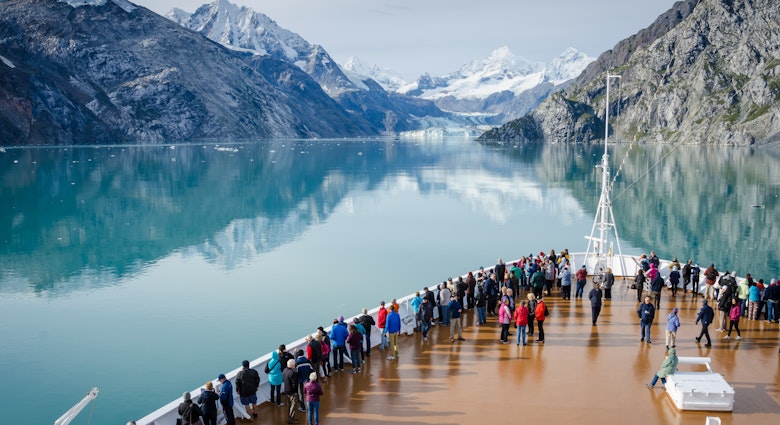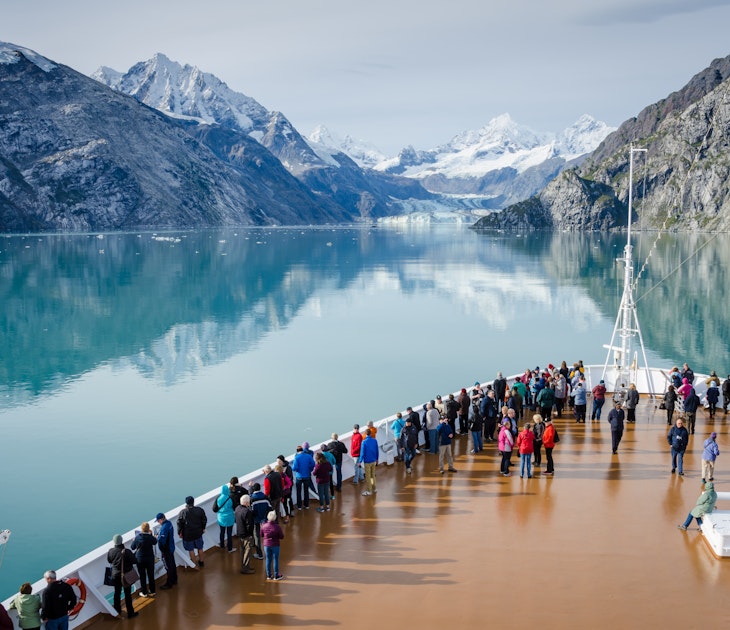

Maybe itÔÇÖs the herd mentality, but 90% of tourists heading to Mexico gravitate towards ░õ▓╣▓È│ª├║▓È, Puerto Vallarta-Nayarit and other well-publicized bastions of beach life and potent margaritas. And while Mexico City itself is an incredible metropolis that makes a worthy visit, the country boasts epic complexity where indigenous groups speak hundreds of variations of 68 different languages, thick jungle enshrouds barely visited pre-Hispanic archaeological sites and the regional cuisine takes you on a journey from guacamole to grasshoppers.
Beach resorts and the big city only reflect a tiny sliver of the countryÔÇÖs riches. To experience the rest, youÔÇÖve only need to get off the sun-lounger and explore.

Guanajuato: a colonial wonderland tucked into mountains and mines
A jumble of burrowing tunnels, opulent mansions, diminutive plazas and alleyways so narrow you can practically steal a kiss across them, Guanajuato is a Mexican city like no other crammed spectacularly into a jagged steep-sided ravine.
Here, surrounded by crinkled mountains and echoes of MexicoÔÇÖs Independence War, riches lie both above and below the ground. Guanajuato is endowed with one of the worldÔÇÖs most lucrative silver deposits and the city industriously mined its precious metal from the 1550s onwards directing the proceeds into a slew of architectural heirlooms built to reflect the splendour of Spanish baroque. In this old townÔÇÖs tightly threaded streets, church altars gleam and grand monuments recall the deeds of erstwhile independence heroes. Alongside them, decorative theatres and the city university (founded in 1732) put Guanajuato in the echelon of MexicoÔÇÖs cultural heavyweights. The city celebrates one of the nationÔÇÖs most storied arts extravaganzas ÔÇô OctoberÔÇÖs Festival Internacional Cervantino ÔÇô and parades its painting pedigree in a museum dedicated to its famous native son, muralist Diego Rivera. Yet, itÔÇÖs the day-to-day rhythms that resonate the most. Audible year-round are the merry troupes of singing, dancing university students dressed in dandy medieval regalia who parade through the back alleys in unique meandering street parties known as ÔÇÿcallejoneadasÔÇÖ.
Puerto Escondido: a surferÔÇÖs heaven
If thereÔÇÖs a heaven for surfers, it probably lies just off Playa Zicatela. The two-mile stretch of golden sand and crashing waves that beautifies the mellow Pacific beach town of Puerto Escondido is regularly touted as n├║mero uno in the hit parade of Mexican surf spots. Even if you have no desire to dodge the giant waves of the legendary ÔÇÿMexican pipelineÔÇÖ, OaxacaÔÇÖs stateÔÇÖs so-called ÔÇÿhidden portÔÇÖ is an intriguing place to linger. ItÔÇÖs a thoroughly laidback town where locals, easy-going expats and suntanned yoga practitioners seamlessly intermingle.
ThereÔÇÖs more to do here than just ÔÇÿhang tenÔÇÖ with dreadlocked surfers. A turtle-watching cooperative invites you to observe moonlit egg-laying at nearby Playa Escobilla, while a clutch of experimental restaurants has recently raised the bar in the quiet residential district of Rinconada. Plus, thereÔÇÖs a string of other beaches beyond Zicatela good for swimming, snorkelling or just sitting back and watching an evening movie on the sand.

Archaeological sites across the country
There are literally hundreds of pre-Hispanic sites scattered across Mexico, yet the bulk of the tourist traffic visits only a handful of them. This leaves a rich seam of half-forgotten, semi-overgrown atmospheric structures nestling in relative tranquility.
Monte Alb├ín is a Zapotec ceremonial centre that sits spectacularly on a flattened hilltop overlooking the city of Oaxaca. Another place where youÔÇÖre unlikely to be hit by a clumsily aimed selfie stick is El Tajin. Surrounded by low, verdant hills near Papantla in the state of Veracruz founded around 100AD, this cluster of pyramids is the most impressive reminder of Classic Veracruz civilization.
For compete isolation, youÔÇÖll need to forsake modern tourist amenities and forge out on your own. Yagul, inhabiting a cactus-covered hill 35km east of Oaxaca, is a former Zapotec settlement that gained importance after the decline of Monte Alb├ín. Along with some nearby caves containing prehistoric wall paintings, it was recently inscribed by Unesco. The atmospheric remants of Tingambato near Uruapan in ▓Ð¥▒│ª│¾┤Ã▓╣│ª├í▓È are set amid a lush avocado grove and their plazas, altars and ball courts display notable Aztec influences. Ruggedly romantic Quiahuitzl├ín perches like a mini Machu Picchu overlooking the Atlantic Ocean north of Veracruz. From its lofty vantage point, you can observe the point where Spanish conquistador Hern├ín Cort├®s first landed his ships in 1519.

Morelia: a city of beauty and brains
One of the earliest cities to take root in SpainÔÇÖs erstwhile Mexican Empire, Morelia was founded in 1541 as Valladolid, and later re-named after local-born independence hero Jos├® Mar├¡a Morelos. History has since been relatively kind to Morelia. The city remains a masterpiece of colonial baroque sculpted out of pink cantera stone and packed with colonnades, aqueducts, manicured parks, palaces reborn as boutique hotels and an impressive cathedral, grandiose even by Mexican standards.
Morelia has brains to back up its beauty. ItÔÇÖs the capital city of the state of ▓Ð¥▒│ª│¾┤Ã▓╣│ª├í▓È in central Mexican, and herein lies a bevy of culture. YouÔÇÖll find the oldest music conservatory in Latin America, the oldest institution of higher education in the Americas (now a university) and one of MexicoÔÇÖs most magnificent libraries encased in an old church. The cultural scene fuelled by students, musicians, writers and artists is equally dynamic.

Jalisco: the heart of tequila country
Visitors to the metropolis of state capital Guadalajara find a trip into the country a great escape into the wide world of this quintessential drink. Start in the actual city of Tequila, where youÔÇÖll find distilleries of famous brands like Sauza and Casa Noble. Surrounded by a sea of blue agave, sun-baked Tequila is a surprisingly attractive factory town thatÔÇÖs firmly on the tour-bus circuit these days. At Quinta Sauza, youÔÇÖll find a grounds the retain the refined air of a Spanish sherry bodega, with colonial-style grounds and Italianate fountains. Across from the cityÔÇÖs main plaza, Jos├® CuervoÔÇÖs Mundo Cuervo is a veritable tequila theme park and the biggest game in town. Meanwhile, La Cofrida estate sits a bit outside of town and makes the 100% organic Casa Noble tequila brand. This elegane ÔÇÿfactoryÔÇÖ is set amid mango trees and uses French oak barrels to age its spirits. For the guilty pleasure of staying in a real-life tequila distillery, reserve one of four casitas at the on-site Hotel Boutique Cofradia, furnished with exquisite only-in-Mexico designs, surround by fields full of agave.

Las Pozas: surrealism in the jungle
Las Pozas (ÔÇÿthe poolsÔÇÖ) is a wonderfully beguiling collection of concrete temples, pagodas, bridges, pavilions, sculptures and spiral stairways that can be found near the village of Xilitla in San Luis Potosi state. Built adjacent to an idyllic series of waterfalls, Las Pozas was the pet project of late British poet, aristocrat and orchid cultivator, Edward James. A long-time friend and sponsor of Spanish artist Salvador Dal├¡, JamesÔÇÖ gardens draw obvious inspiration from his surrealist amigo, along with influences from Antoni Gaud├¡ÔÇÖs Park G├╝ell, and the fantasy world of Lewis CarrollÔÇÖs AliceÔÇÖs Adventures in Wonderland. The effect is bewildering. ItÔÇÖs supposed to be.
James sold his prized surrealist art collection to pay for the extravagant gardens, but they were never completed. Rugged jungle creeps over the half-finished structures, although their fragmentary nature only adds to their bizarre appeal.
James died in 1984, whereupon his son generously opened his fatherÔÇÖs self-styled ÔÇÿGarden of EdenÔÇÖ. Since 2007, they have been managed by a foundation, which is gradually restoring them.
Community tourism in Oaxaca
ÔÇÿEco-tourismÔÇÖ is a frequently misused moniker, but it has few more successful models than the Pueblos Mancomunados. HereÔÇÖs a cluster of eight indigenous villages in the Sierra Norte, 60km northeast of Oaxaca, that have clubbed together to offer outsiders wilderness adventures coupled with a close-up communion with traditional Zapotec village life.
Set at an altitude of between 2500m and 3200m in a region of spectacular natural beauty replete with canyons, caves, waterfalls and panoramic lookouts, the eight tiny ÔÇÿpueblosÔÇÖ offer comfortable no-frills cabins, hearty home-cooking and a handful of random extras (including a couple of ziplines). The settlements are linked by over 100km of mountain trails accessible to walkers, cyclists and horseback riders, but not cars. Tourism, the mainstay of the local economy, employs 120 local people as guides, cooks and homestay hosts and attracts a modest 17,000 annual visitors. Even more importantly, 90% of tourist income is invested directly back into the rural community. You can visit the villages on your own or book a package through locally managed agency, , who have an office in Oaxaca City.
Explore related stories









 ArtAfro-Mexican culture in Mexico: What to know about this important history
ArtAfro-Mexican culture in Mexico: What to know about this important historyNov 27, 2024 ÔÇó 7 min read

